Jock in the jungle: Chef Jock Zonfrillo journeys into the Amazon
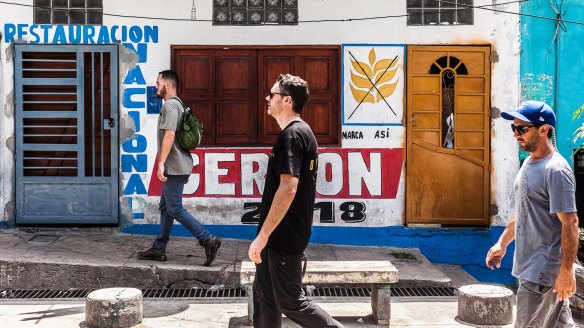
Max Veenhuyzen explores the Indigenous food of the storied forest and river region with chefs Jock Zonfrillo and Pedro Schiaffino.
Before it was the planet's one-stop-shop for everything, the Amazon was a river. A teeming rainforest. An ecosystem unto itself and the source of life for tens of millions of South Americans. It was a rich, nigh-mythical place immortalised in bedtime stories, movies and music.
For Peruvian-born chef Pedro Schiaffino, however, the Amazon is a rich seam of ingredients and inspiration. Long regarded as a champion of his country's native ingredients, Schiaffino has been likened to a Peruvian Rene Redzepi. His Lima restaurant Malabar (opened in 2004) put his name on the world map, but it was the 2012 opening of Amaz – a restaurant zeroing in on Amazonian ingredients – that served as the loudest statement of intent. He is, in short, the perfect candidate for a deep-dive into the foodways of the Amazon.
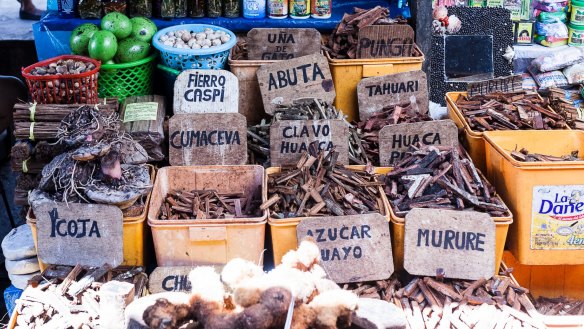
I'm here by the good grace of William Reed, the organisation behind the influential – albeit controversial – World's 50 Best Restaurants list. One of the spin-offs of the list is 50 Best Explores, a series where chefs and media from around the world are invited to a region for a crash course on its indigenous food culture. In this instance, the visiting chef is fellow Australian Jock Zonfrillo, chef-owner of the reigning Good Food Guide Restaurant of the Year, Adelaide's Orana, and a chef whose efforts at preserving indigenous food culture are recognised globally. If you're choosing people to head into the jungle with, it's hard to think of two better candidates.
When Schiaffino began his research into Amazonian ingredients (he cites palm hearts, wild cilantro and cocona fruits as his gateway discoveries), he set course for the northern Peruvian city of Iquitos. Our Amazonian adventure begins there too.
A two-hour flight from Lima, Iquitos has many claims to fame. In addition to being Peru's gateway to the Amazon, it's also the world's largest city not accessible by road.
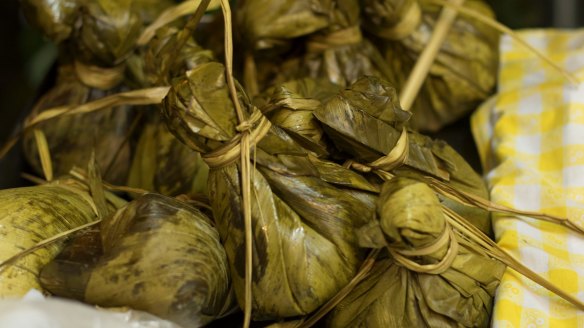
While ornate town squares and grand colonial-style buildings speak to the city's glory days during the Amazon Rubber Boom, most of Iquitos's charms are earthier in spirit, none more so than the sprawling Belen market.
Schiaffino's first visit here was in 2004 and close to 15 years of working this beat makes him a dab hand when it comes to identifying the market's riches. Here's a pile of mottled, lime-green breadfruit. There's an alley filled with medicinal herbs and tonics. Prehistoric-looking seafood, including the fast-growing paiche, one of 200-odd species of catfish found in the Amazon, are a ubiquitous sight both in raw and cooked form. The bustling streetscapes and mounds of produce are a picture of seasonality in more ways than one: it was only once we walked to the sunken "Venice" part of the market that Zonfrillo realised he had been here previously, albeit during the wet season, when this part of Belen is underwater.
Like all markets, there's no shortage of things to eat, with Amazonian specialties such as grilled alligator, fatty steamed turtle eggs and palm tree grubs (grilled or stewed?) on offer. Otherwise, the consensus is that the city's most reliable address for regional cooking is Blanquita, a two-storey, homely diner where rib-sticking deliciousness rules. Sweet tamales. Fried rice bolstered with chicken and bacon. Pork sausages of remarkable juiciness. On the table: small bowls of rocoto, a chilli and onion condiment that makes everything taste better.
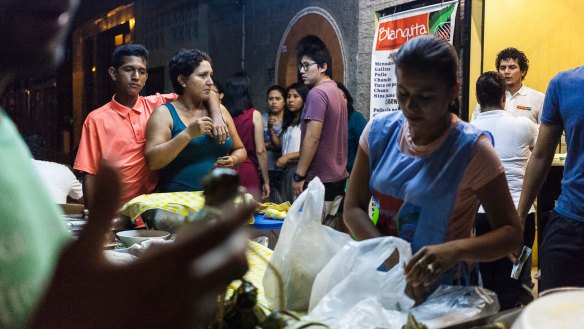
Our after-dinner entertainment consists of trishaw rides and drinks at the Refugio, a lively pub whose attractions include well-priced drinks, a psychedelic colour scheme and fast-moving locals that know how to make the most of the live cumbia band. Yet for all the people-watching pleasures of the Refugio, it's the Amazon's food rather than its footwork that brings us here.
Our primary destination is the Boras de Pucaurquillo, a Bora and Huitoto Indian community on the Ampiyacu river, one of the Amazon's many tributaries. Once adversaries, the Huitoto and Bora are now allies with intertribal marriage a more regular occurrence. The four-hour boat ride from Iquitos to the community is notable for its slowly shifting scenery, lack of mobile reception and relative speed (Zonfrillo tells me his first visit to the Amazon with Brazilian chef Alex Atala involved a 12-hour ride in metal, single-file, open-top canoe and lashings of heavy rain).
At the village, Schiaffino is welcomed like a long-lost brother: an encouraging sign that his interactions with the community are honourable and above-board. (Zonfrillo: "Seeing how much he's loved and respected by the people puts me at ease and tells me that he's not made of hay.")
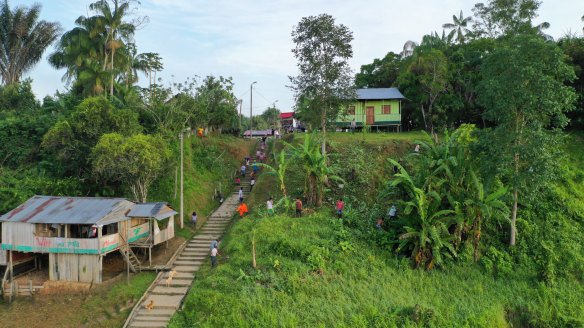
Spritely village elders lead welcome dances, with members of our entourage coaxed into joining. The experience stirs something in Claudia, one of our minders who grew up in Lima.
"We didn't learn these dances in school," she whispers with regret, a reflection of the capital's largely Incan-centric culture.
Dinner is a sprawling, all-in feast with the task of cooking for visitors rotated between the village's women. Each cook brings her own specialities to the table and our spread is both delicious and diverse. From one household: a bold salad of crunchy mountain fruits spiked with tiny Tic-Tac-sized aji charapita, the hottest and most expensive of Peru's 5000-odd chilli varieties. From another: zarapatera, a soup made with ground turtle meat thickened with green plantain. The meal is also my first encounter with macambo, a jungle nut that looks like a squashed brain.
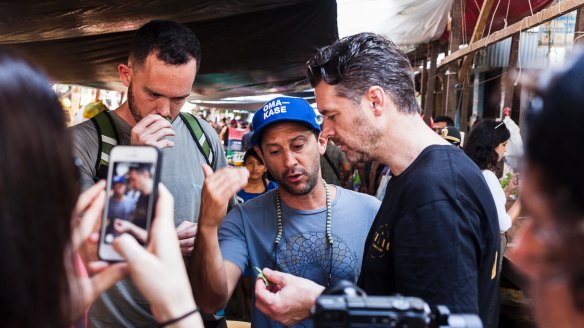
Later, we bathe by iPhone light in the warm waters of the Ampiyacu, scrubbing ourselves with a communal bar of soap as tiny fish nibble at our toes. Above us: low-flying bats skim the water, stars twinkle, intermittent flashes of lightning brighten the sky. After some post-swim beers, we retire to our billets – in our case, upstairs at the local pastor's house. Mosquito nets protect us from the bugs, but do little against the crowing of an insomniac rooster through the night.
The next morning, villagers from the neighbouring Bora community take us into the undergrowth, where we get a crash-course in jungle resourcefulness. The jangly fruits of a native palm are cut open to reveal an electrolyte-rich liquid that tastes like the Amazon's own Gatorade. (The plant's needle-like leaves, meanwhile, are used as toothpicks). Gourds are dried and turned into cups and bowls.
Then there's the yuca, a starchy, tuberous and versatile root native to South America. Grated, washed, fermented and separated into pulp and liquid, the yuca is turned into two important foodstuffs. The first is casabe, a chewy flatbread cooked over fire in shallow pans. The starchy yuca water, meanwhile, continues fermenting until it becomes tucupi, a deeply savoury liquid with a bold, Vegemite-like funk: made using techniques and recipes passed down between generations, it's as uncensored a taste of the Amazon you're likely to eat. Schiaffino sells this tucupi under his Despensa Amazonica project, the exercise as much about economic opportunities for these communities as it is restoring pride to a marginalised people. Seeing Schiaffino's straight-to-the-source approach reminds Zonfrillo of an important lesson learned the hard way.
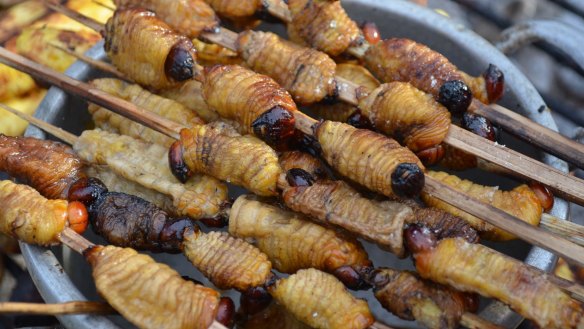
"At the start, I put way too much value in people that said they're connected in some way with indigenous culture and putting themselves between me and them," he says. "They're gatekeepers, they appear out of f---ing nowhere like a traffic warden. It puts the fear of God into you because you don't want to do the wrong thing, but if you sit with an indigenous woman or man and talk to them, you'll get an answer. It might not be the answer you want, but it'll be their answer."
The more I learn about Schiaffino's work championing Amazonian ingredients, the more similarities I see between the indigenous food situations in the Amazon and Australia. The not-always-glowing attitudes towards indigenous populations. (Schiaffino: "No one gave a shit about the Amazon before.") The evidence suggesting ancient Amazonian tribes were both farmers and hunter-gatherers (the rhetoric surrounding "Amazonian dark earth" will be instantly familiar to anyone familiar with historian Bruce Pascoe's observations on early Aboriginal agriculture). The shared sense that maybe, just maybe, the tide is starting to turn.
"I was having a conversation the other day with an anthropologist," says Zonfrillo, who was awarded the Basque Culinary World Prize in San Sebastian last July, along with €100,000 (about $A160,000) in prize money that will be used to provide interest-free loans to Indigenous food projects around Australia. "Everyone does backflips over pyramids and clay pots but archaeologists now realise they can learn so much about a culture by studying food remains. They weren't looking at those before but they are now."
Schiaffino is equally optimistic about the future. Buoyed by the support of other big-name Lima chefs – Mitsuharu Tsumura (Maido) and Virgilio Martinez Veliz (Central) are among the chefs in the capital to also celebrate Amazonian ingredients – attitudes towards South America's great river and forest are, at last, changing.
"People always talk about the Amazon forest as being rich because of the timber and the gold mining and cocoa leaf production, but nobody ever talks about the richness of the people and the culture," he says. "There are so many things that make this region rich. We want to look at the Amazon in a different way."
Restaurant reviews, news and the hottest openings served to your inbox.
Sign up